Comparisons - Central European Villages Repeatedly Visited
Tázlár is located on the Great Hungarian Plain, about 140 kilometers south-east of the capital and roughly midway between the Rivers Danube and Tisza. The land is very flat, apart from some areas of sand dunes. The climate is dry, soils are generally poor and most villagers have traditionally practiced mixed farming, including grape and wine production (see Current Research Project)

The Great Plain is an open, flat landscape; the fields in the picture on the left are among the most productive in the area; they were returned to private ownership recently, and the process was hotly contested. The sandy soils on the right are more typical.
When I embarked on my study of the village in 1976, only 15 years after Hungary had theoretically completed mass collectivization, I found that this village was very far from the goal of a Soviet style cooperative (kolkhoz). Collectivization was resisted throughout the 1950s by the great majority of villagers and tragic memories of that period persist among older people.
In 1961 villagers reluctantly joined an institution called the 'specialist cooperative'. They were not much concerned with issues of land ownership and my work largely ignored the topic (1980). What mattered was being able to use land, and here the cooperative pursued a highly flexible policy. Even when it confiscated land to establish cooperative fields it offered equivalent parcels elsewhere, so that the 'family labour farm' could produce the commodities that society needed. The 'socialist' institution supported the 'private' production of its members and also offered secure marketing outlets.
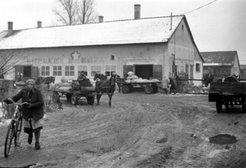
Villagers purchasing supplies from the socialist institution, to use in their private production.
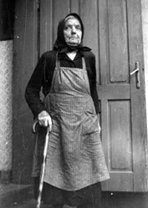
The wife of Mihály Lázár, photographed in 1977. Her husband committed suicide in 1951 when he came under political pressure as a kulák (rich peasant).
This Hungarian version of 'market socialism' brought rapid increases in wealth and living standards to the rural population. The population that was located mostly on scattered farms or tanyas until the socialist period now came to be concentrated in the nuclear centre, where shops, offices and cultural facilities were all developed. By the 1970s, younger people already took the socialist system for granted and sought to benefit from the new opportunities in the sphere of consumption - houses, cars, colour TVs etc. This prosperity was manifested in an inflation of the money given to the young people at a wedding, though the style and content of this event showed a lot of continuity with rural traditions.
Wedding pictures from 1977
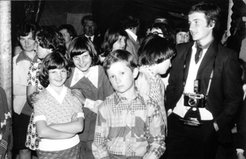
Anthropologist on the right.
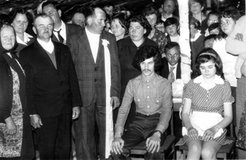
The new couple, the Master of Ceremonies, and bride's hosts of the wedding party.
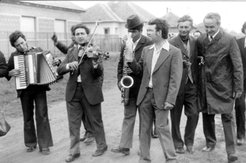
The musicians escort the last guests home in the early hours of the morning.





